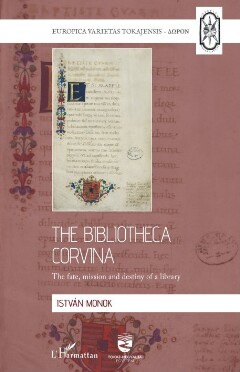Oldal 104 [104]
Xystus Schier, as his first biographer, his fellow monk Martin Rosnack states,
„Natus est... Pruggae ad Leytham in Austria anno MDCCXXVII, XIX Julii."" He
was born on the left bank of the river Lajta (not in Királyhida, but in Lajtabruck —
Bruck an der Leitha). He studied in Pozsony between 1738 and 1743, so he could
have been present at the coronation of Maria Theresa." Between 1745 and 1750
he was a student at the Augustinian monastery in Vienna, then returned home
for five years to work in the Augustinian monastery in Bruck an der Leitha. He
was then invited by the Order to become a librarian at the Convent of St. Roch
in Vienna. His work as a historian, his engagement with the novices, and the or¬
ganisation of literary and academic life (Sodalitas Literaria Augustiniana)*” earned
him great prestige. During his lifetime and posthumously, 20 of his books were
published in the 18th century.*””? He worked in a variety of genres, from the his¬
tory of printing in Vienna to occasional poetry. Most of all, he investigated the
history of his own order, and this included the history of the orders in the Hun¬
garian Kingdom. He was particularly interested in the Arpad Era, as he called
it: the age of kings “of the first dynasty”. He wrote about the queens,*”* but also
about the successor of Archbishop Lodomer of Esztergom of the Monoszlö fam¬
ily, Gergely Bicskei," the fiancée of King Béla III and his wives," and Buda of
the Arpad Era.‘*! The other period that particularly interested him was the era of
Matthias Hunyadi. He published a book on the University of Pozsony,**’ but some
documentation of the Sodalitas Danubiana has also survived. In his collection of
manuscript materials, there is a lot on Hungarian cultural history, but I do not
want to list them here."
Xystus Schier’s History of the Corvina, his dissertatio, was published in 1766.
In the preceding decades, the relationship between the Hungarian orders and the
Habsburg imperial court had changed (after Vitam et sanguinem!). The court did
not abandon its intention to change the state administration system in the Hun¬
#74 ScHIER-Rosnack 1776, a2recto.
#5 Tue life of Schier is also commemorated in the bio-bibliographies of the orders of the 18th and 19th
centuries. For more modern literature, see MıxscH 1966, 356-366., MıxscH 1969.; RENNHOFER 1970,
317-324. He studied at the Jesuit Gymnasium in Pozsony (not mentioned in his biography, and not until
1745, according to the literature): Album studiosae juventutis Gymnasii Posoniensis, 1725-1765 (Eszter¬
gom, Föszekesegyhäzi Könyvtär, Coll. Batthyäny Cat. IX. Lit. Tit. 1. e. fol. 61r, 64r, 67r, 69v, 72v, 75v.
— Thanks to Istvän Fazekas for the data, in 1738 he is parvista maior, and then he moves upwards year
by year, there is no grade repetition, he finishes as rhetoricus in 1743.
476 SZELESTEI NaGy 1989, 100.
#7 Scuter-Rosnack 1776, 11-15.; Nova Bibl. Eccl. Friburgensis, 5(1780), 82-87.; KiüpreL 1809, 7-18.
Mixscu 1969, 74-134; Rennnorer 1970, 319-324.; ExLer-Monok-ÂBRAHÂM (ford), kiad., Xystus
Schier..., 2019.
ScHIER-Rosnack 1776. I note that the author of the latest monograph on the subject does not refer to
Schier’s work (ZsoLvos A. 2019.)
ScHIER 1768.
SCHIER 1770.
ScHIER 1774.
ScHIER 1774a. (Those involved with the University of Pozsony’s history are not familiar with (or refer
to) Schier’s work, see e.g.: Ktaniczay T. 1990.; Kraniczay T. 1993.; Kıanıczay T. 2010.
Mixscu 1969, 90-137, where Miksch gives the current provenance of the manuscripts.
S
478
47
So
48
S
48
a
48.
S
483
102

